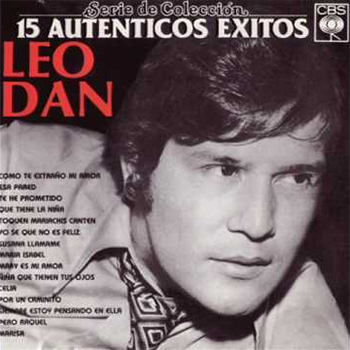Tultepec
The National Pyrotechnic Festival, which takes place in Mexico, is an annual event to promote the country’s tradition of production and use of fireworks. It began as celebration in honor of John of God, the patron saint of fireworks makers, in the municipality of Tultepec, State of Mexico, which produces about half of all Mexico’s fireworks. The main event, a parade of “toritos” or bull-shaped frames with fireworks on them, began in the mid 19th century. The modern national festival began in 1989 and includes various events including fireworks competitions, but the main event remains that of the toritos, with about 250 “running” along the streets of Tultepec in 2013. Read more…
Every year during the month of March the town of Tultepec hosts one of the largest fireworks festivals in the world. The relatively unknown festival occurs over two weekends with different pyrotechnic events happening each night. Teams from around the world come to compete in the event.
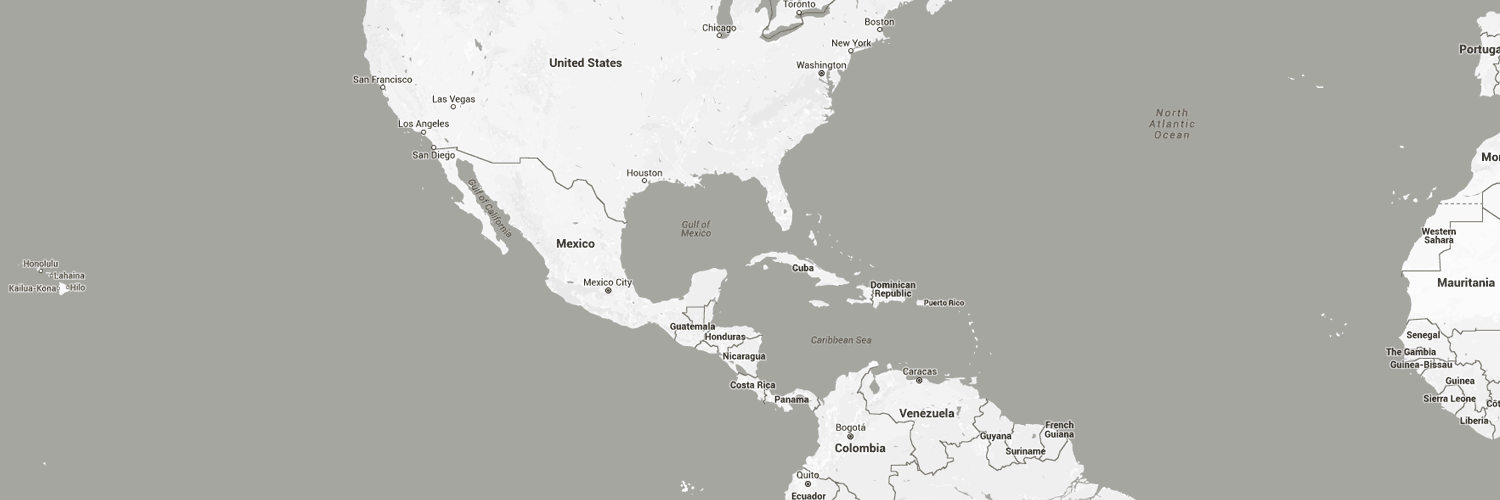
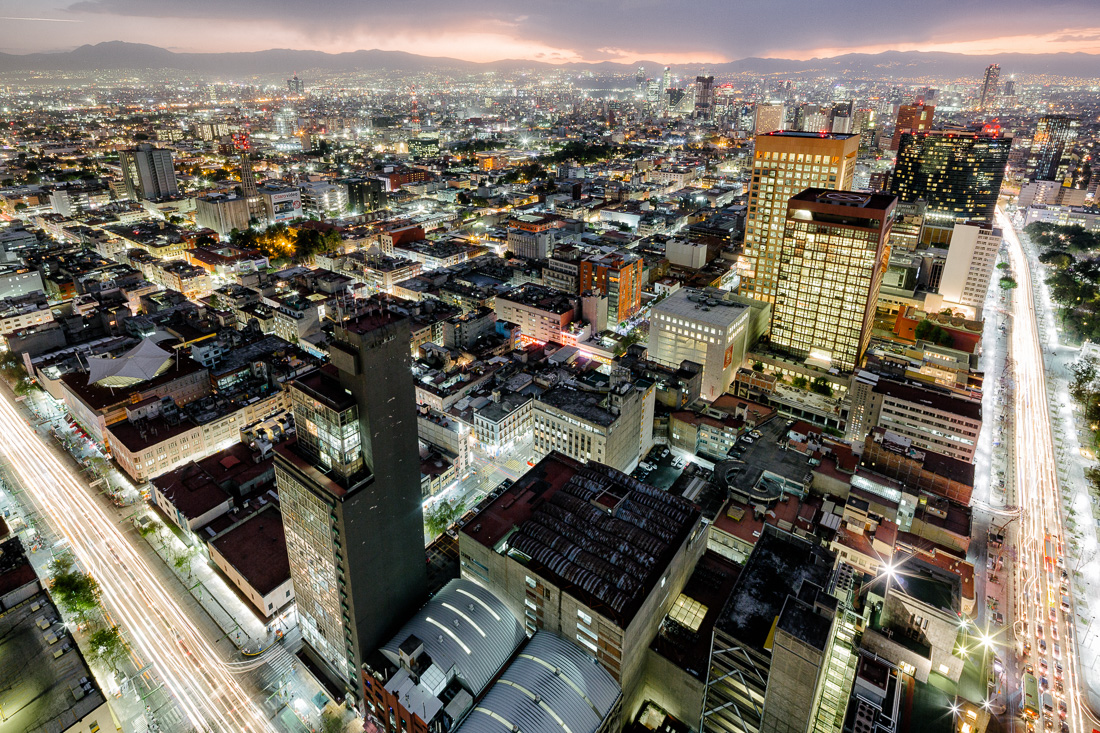
Tultepec has a long history with pyrotechnics. Some of the most famous pyrotechnic innovations have come from the area, which produces eight percent of all the fireworks made in Mexico.
There is a good chance on the 4th of July, Americans have celebrated the birth of their country by burning the fireworks made in Tultepc.
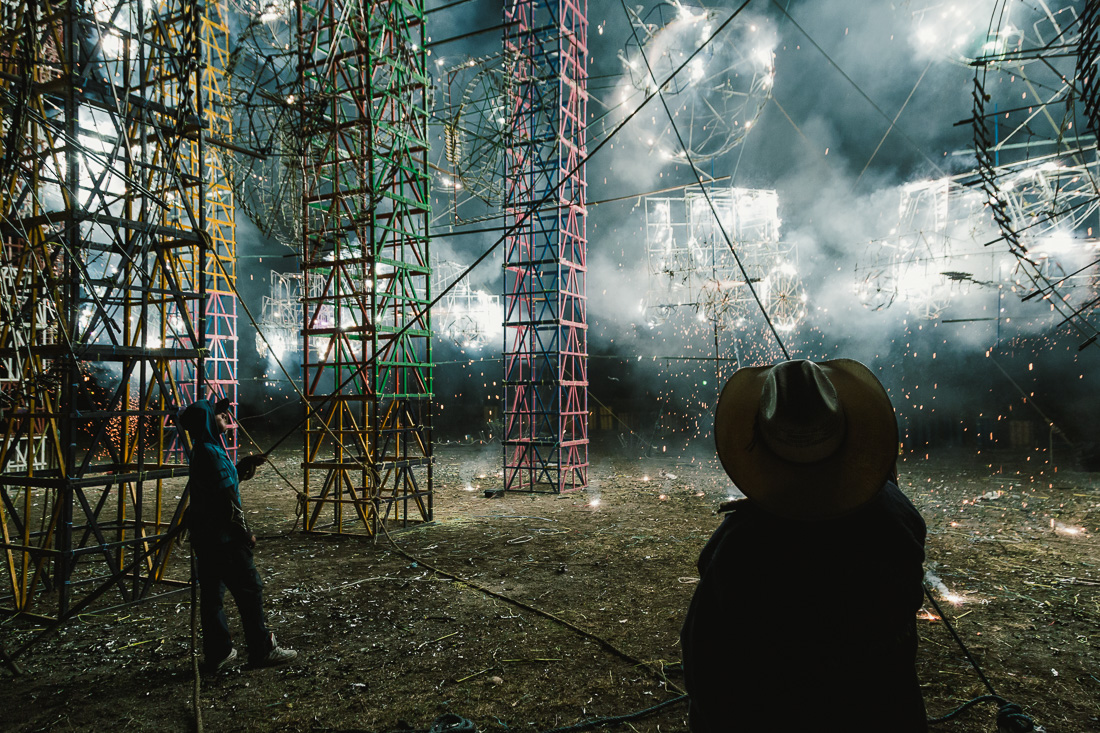
The first event is the Castillos, a competition between regional states of Mexico. Each team from constructs a wood lattice castle and attaches large pyrotechnic apparatuses – pinwheels, canons, and more.
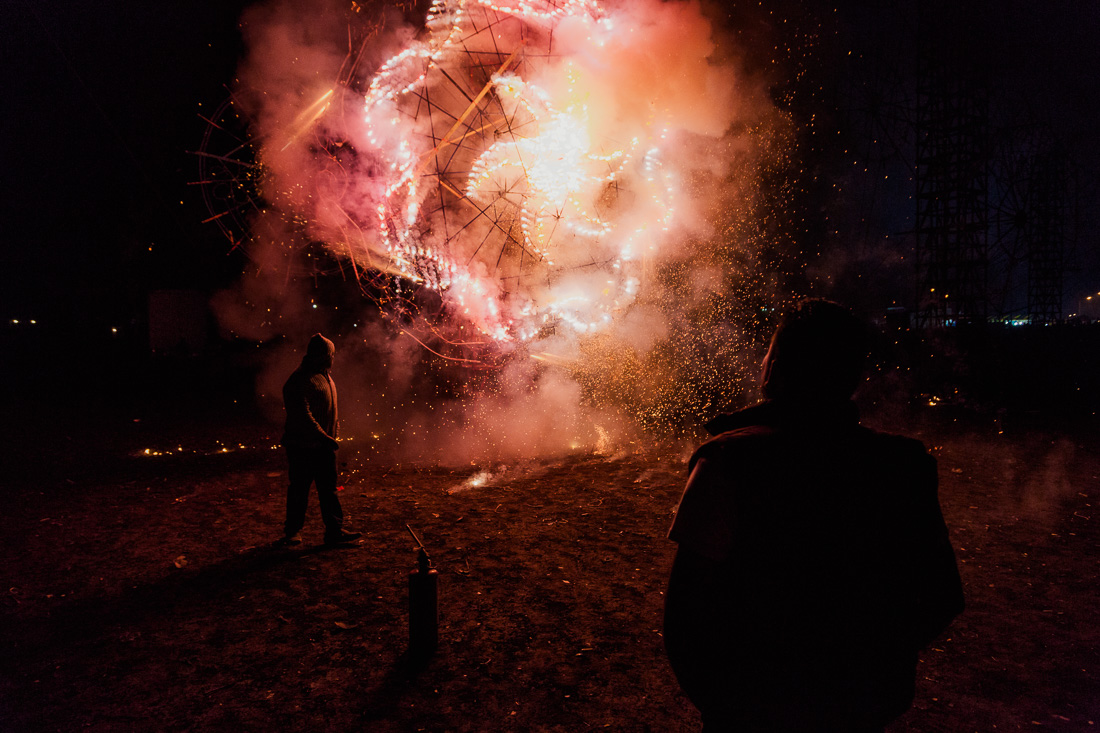
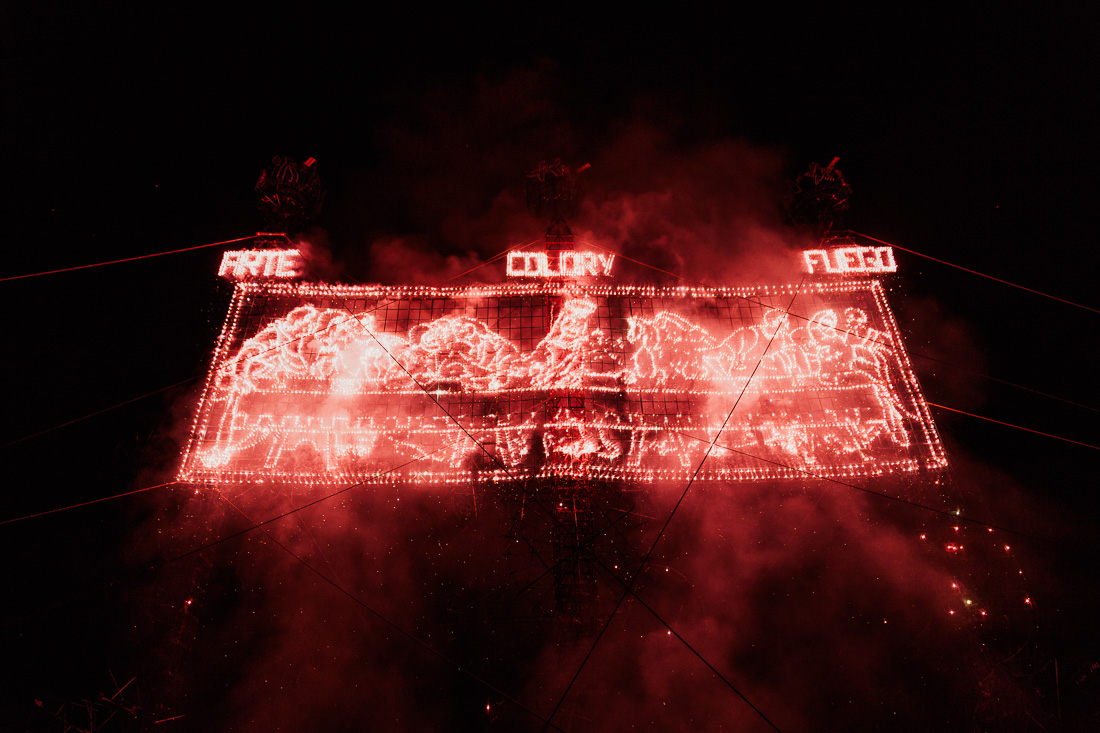
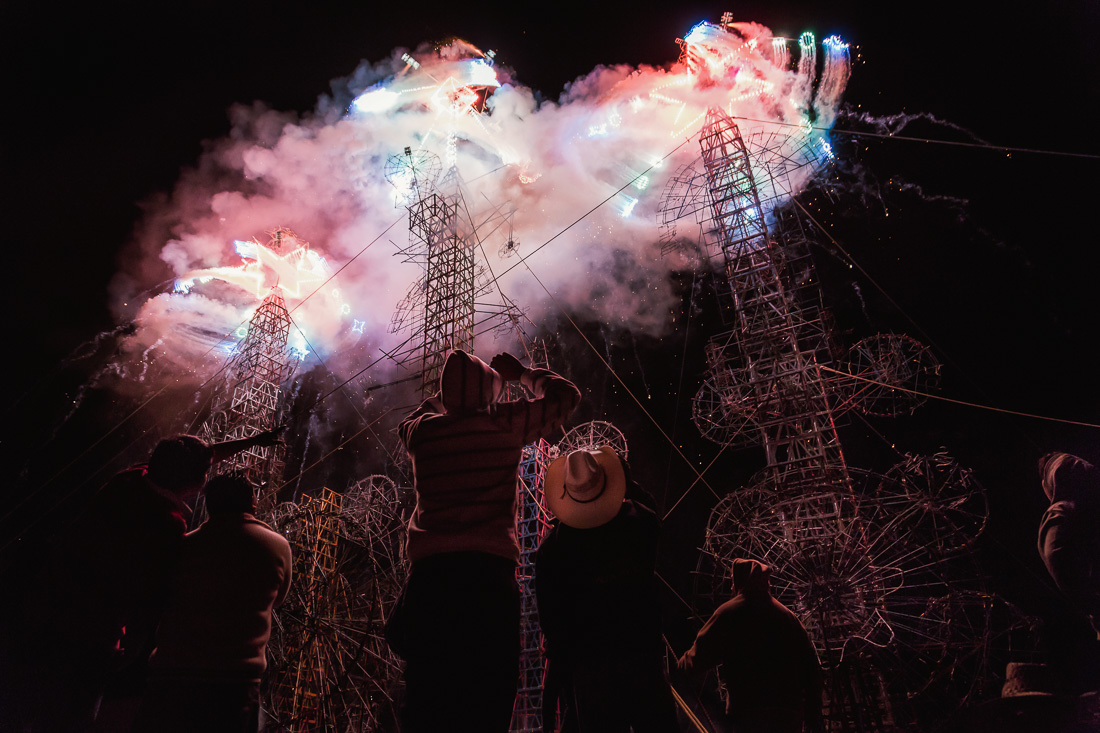
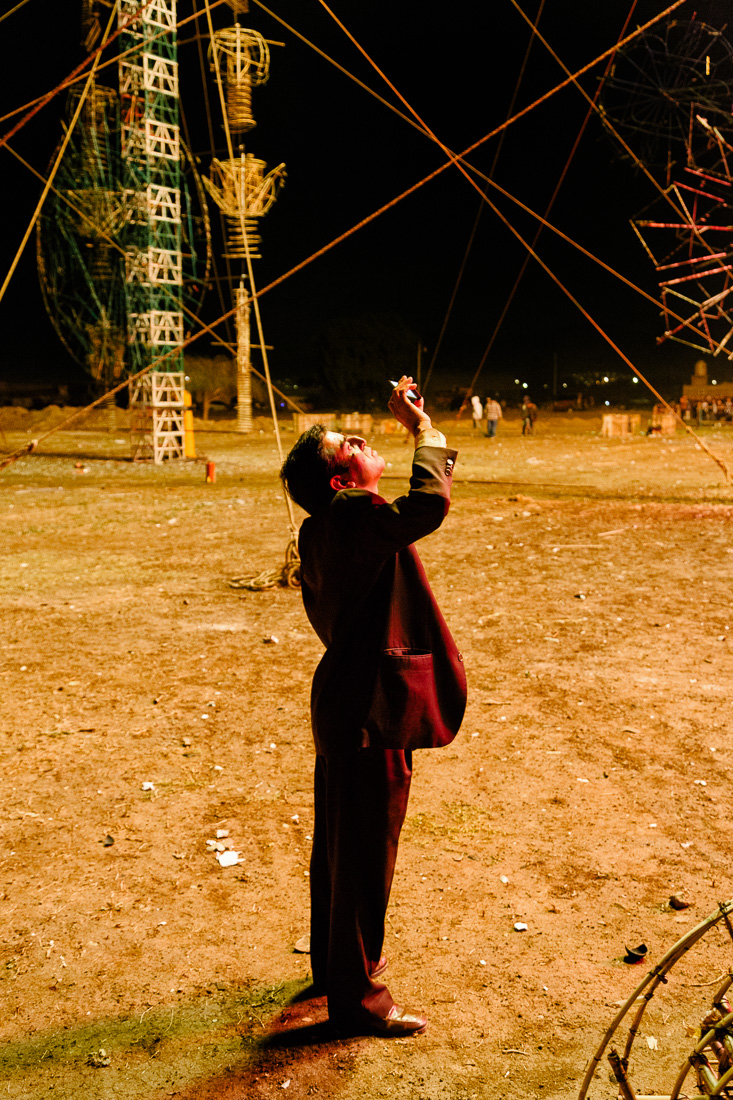
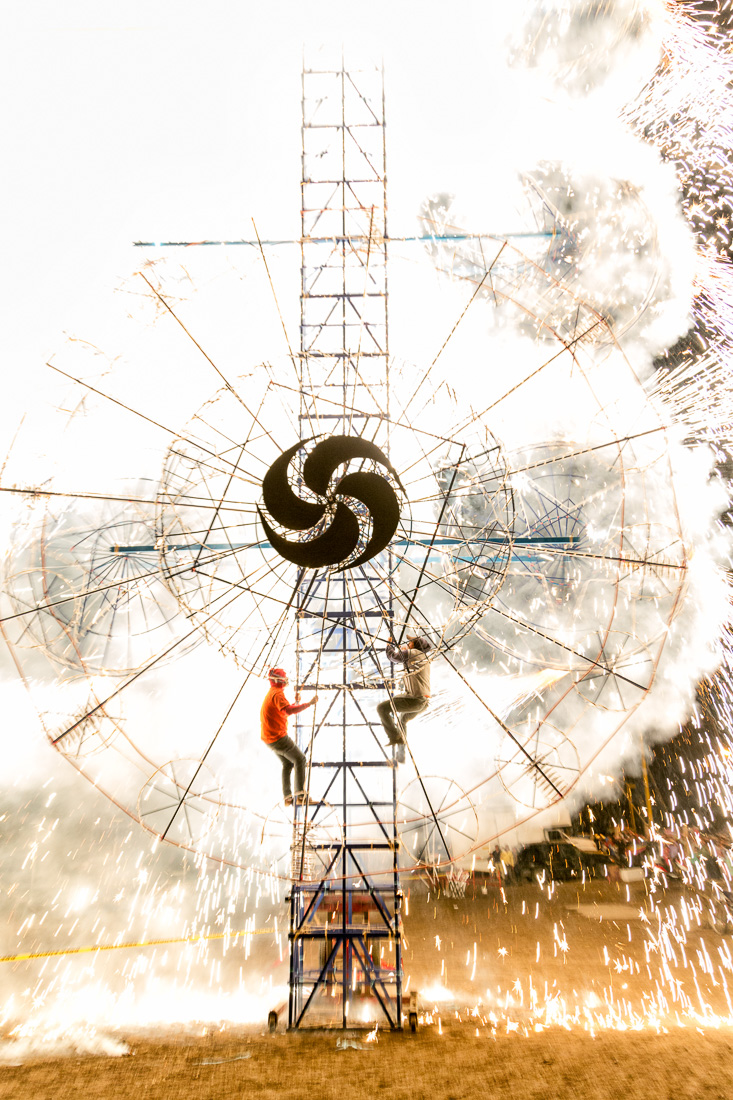
The second competition is of the traditional aerial sort – large mortars on the ground that launch shells hundreds of feet into the air. Unlike the castillos, this competition is open to international teams.
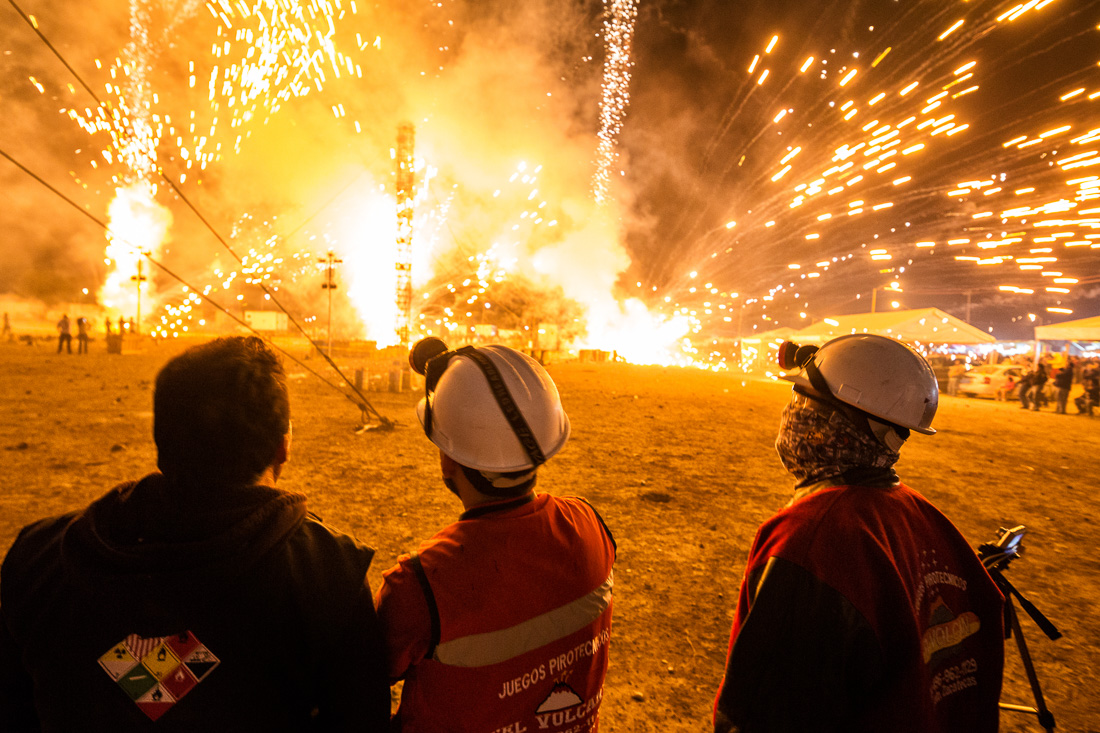
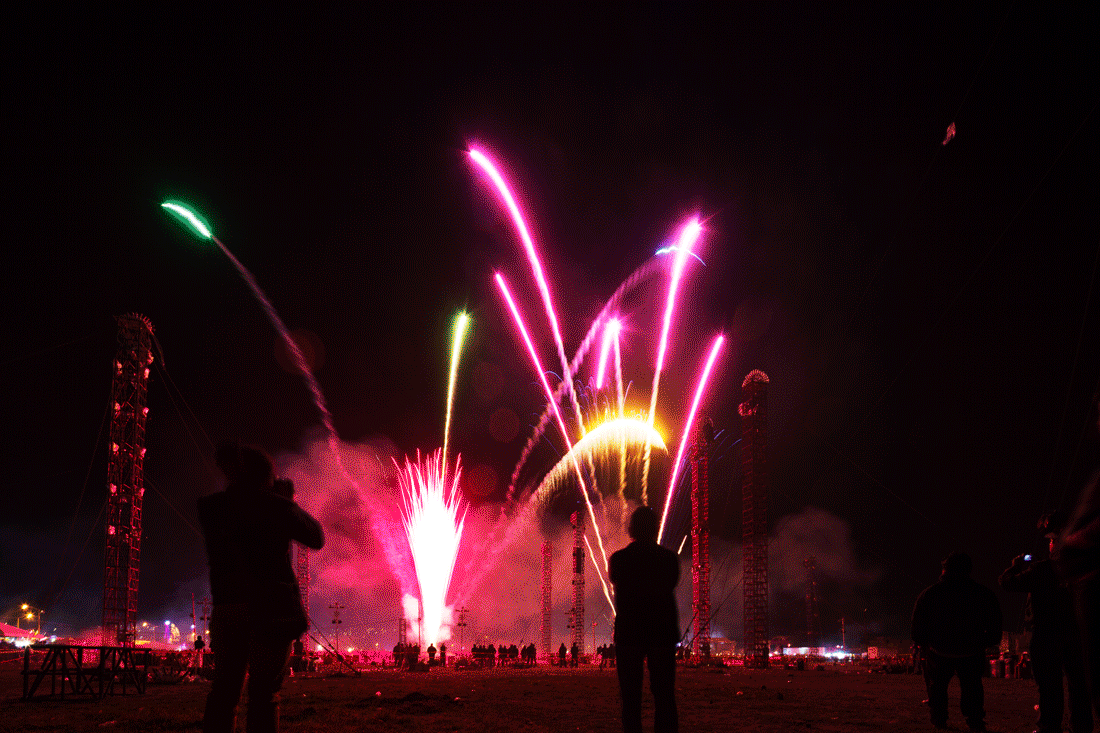
Toros del Fuegos
The main event is the “pamplonada.” Named after the Running of the Bulls in Pamplona, Spain, these “little bulls” or “toritos” are also fireworks frames. These frames are made from wood, reed, hard paper Mache (called cartonería), wire and more and painted bright colors. They can measure anywhere from fifty cm to over three meters in height costing between 400 and 20,000 pesos to make. The larger toritos are made by groups of thirty to forty people because of the cost and can have as many as 4,000 fireworks on them. The toritos are giving names such as El Chico, Sagitario Toro Maya and Monster. In the 2013 event, over 250 of these toritos were registered to participate. The toritos are paraded over the various streets of Tultepec, setting off their fireworks for five to six hours until they arrive to the main plaza of the town. Read more…
The bulls are communal constructions. Families and friends work together making cartoon-like toro statues. Every few blocks a Toro sits idly, some under tarps, some half painted, some menacing, sinister and devil like; others with impish grins and flowers, reminiscent of Elsie the cow. There are over 300 toros and each has a unique identity. Some have Aztec insignia, others look like famed Mexican luchadores, others take cues from pop-culture; the Hulk or Optimus prime.
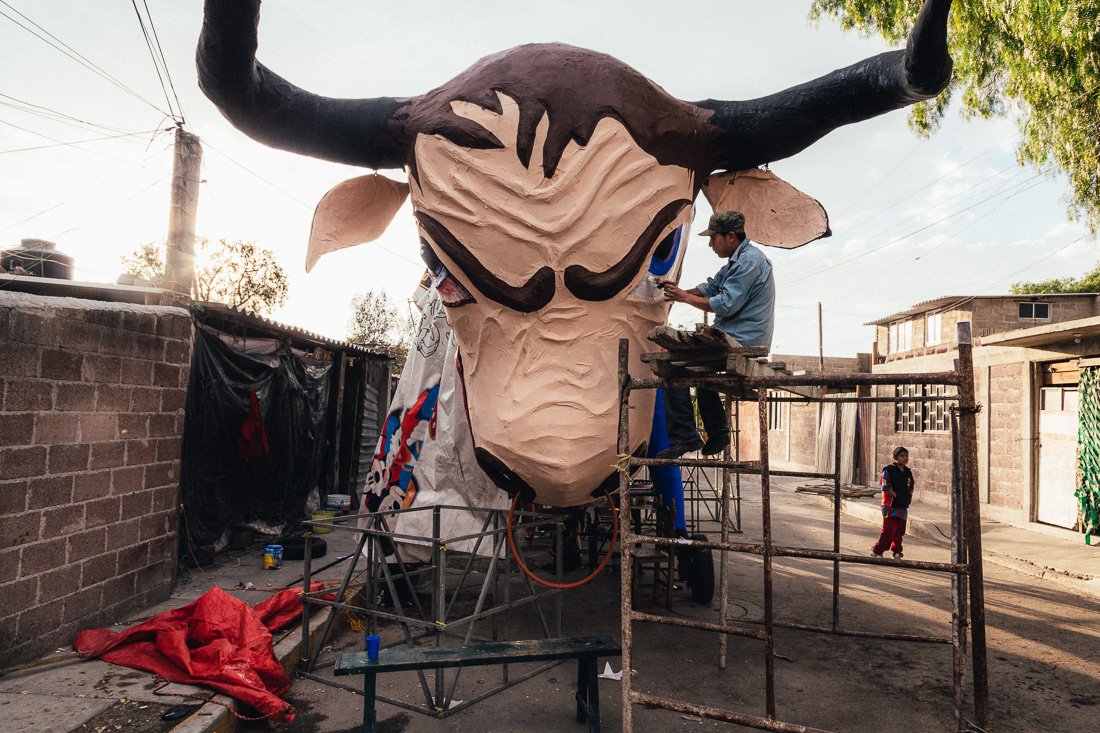
Save for a few exceptions, all have the shape of cattle and generally the same structure – a larger than life frame of paper Mache with wheels at the base that allow the statue to be rolled through the streets. A small wooden lattice is placed on the back of the toros like a saddle. This is where the fireworks are attached. Large pinwheels that spin on the back of the bulls and ribbons of rockets that line the bull’s flanks.
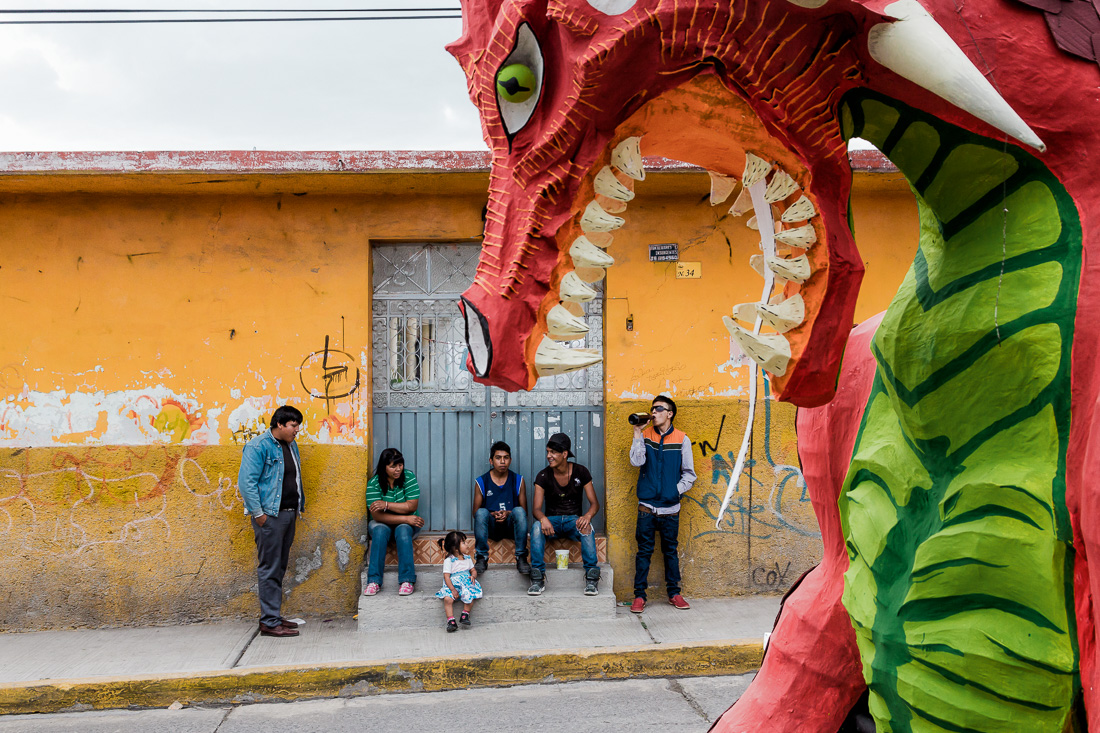
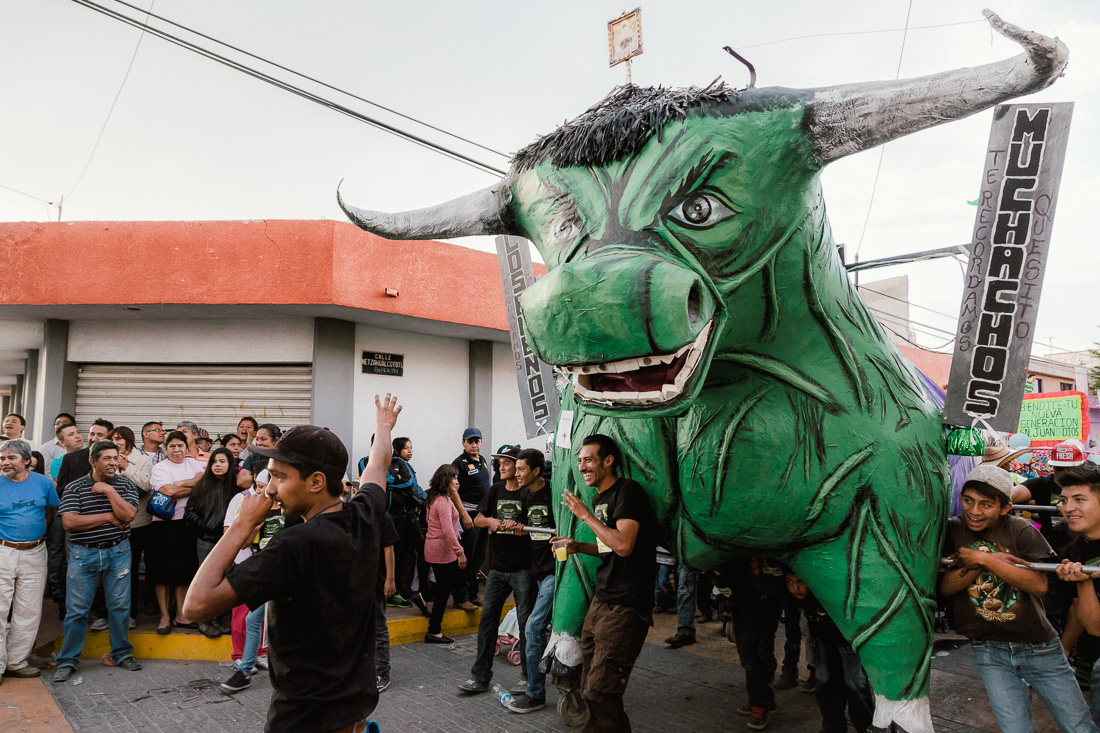
Later in the afternoon, the bulls are paraded through the town. People crowd the streets and cheer on the different designs as young men push the statues around a predetermined route. Around six o’clock, as the evening light fades; the first bull is thrust into the main plaza of Tultepec and the attached fireworks are lit.
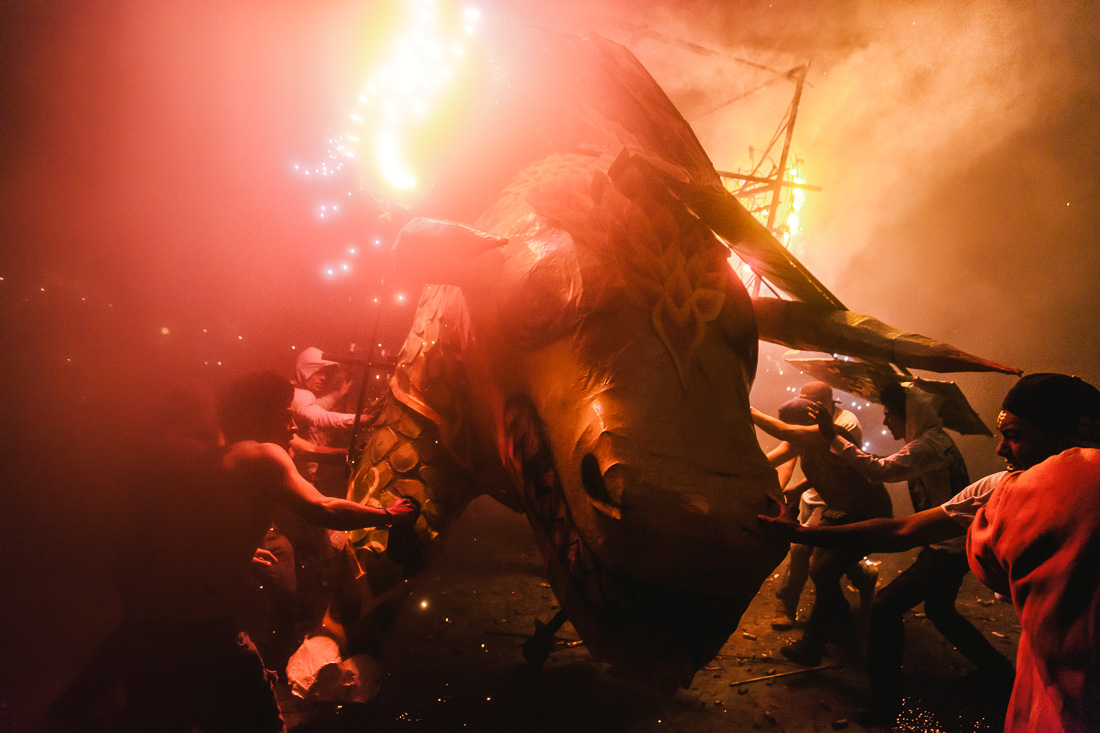
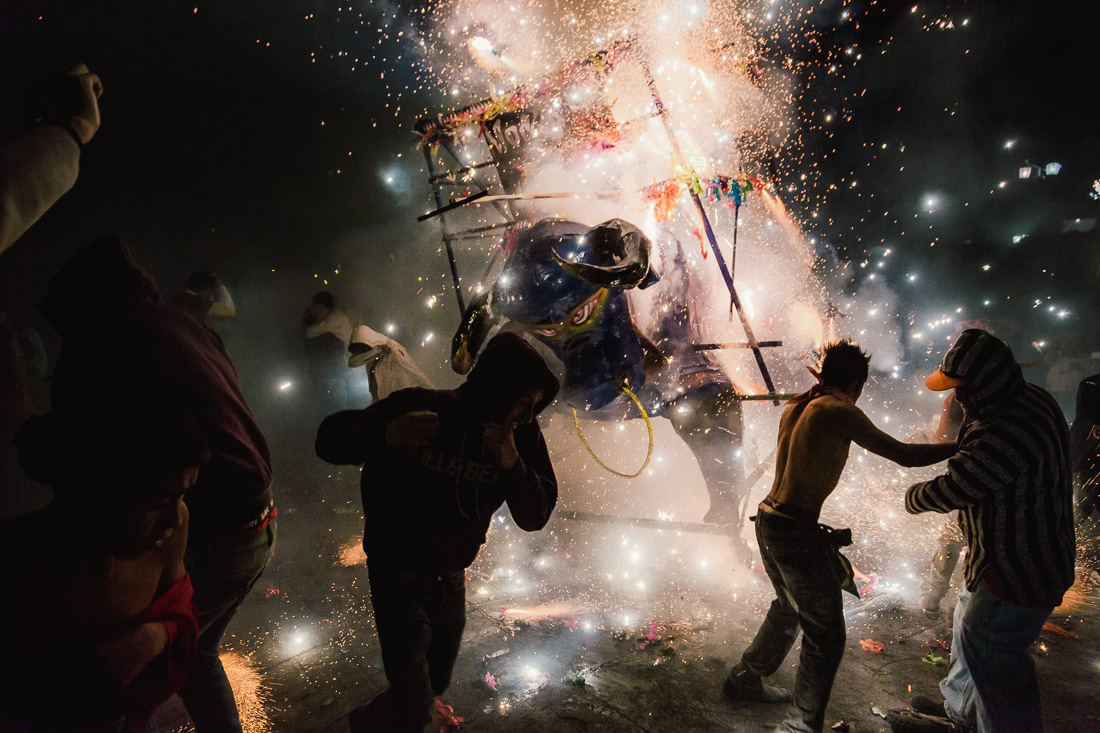
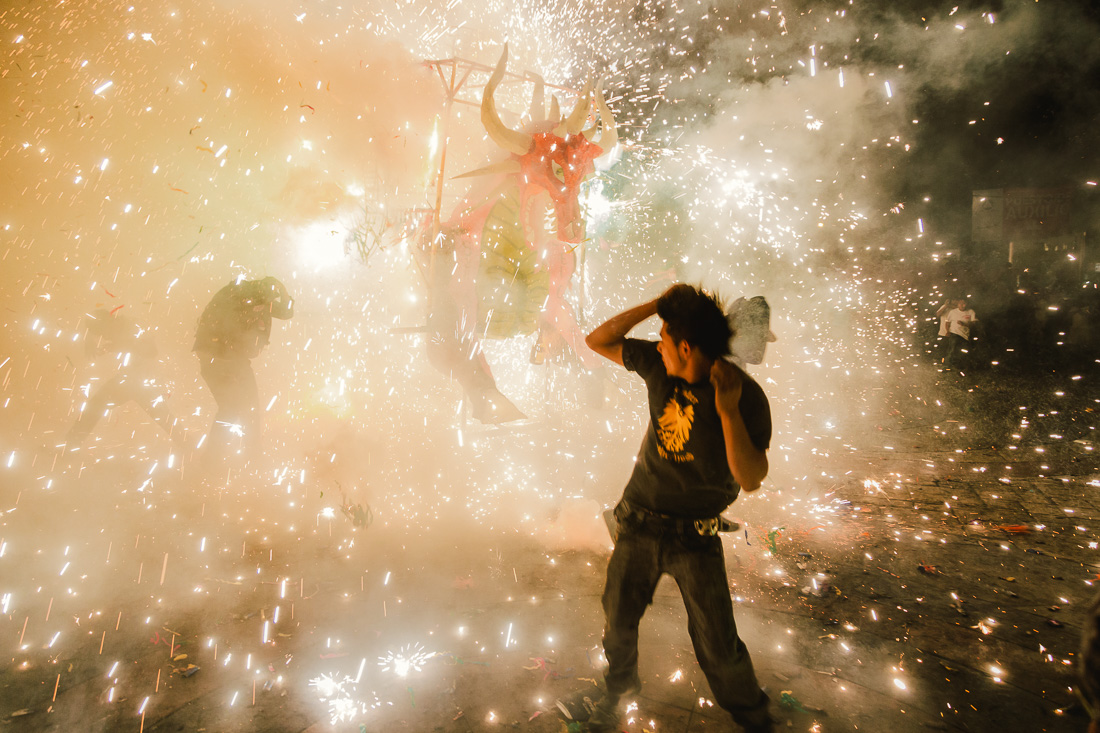
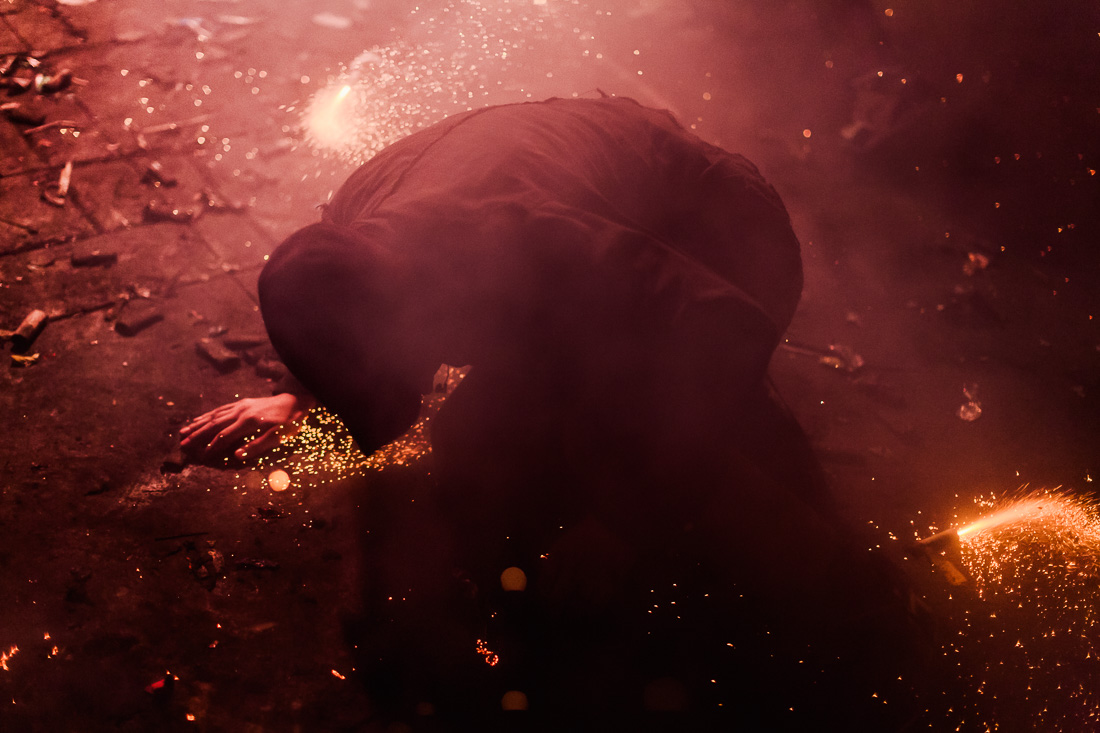
Music
The song used in the video is “Yo Se Que No Es Feliz” by the Argentine composer Leo Dan. He recorded more than 20 albums during his long career during the late 20th century between Argentina and Mexico. His appreciation for Mexican music led him to record with mariachis, and from there he went to international fame. His music was well received by the Mexican public since his voice was a good match to the traditional mariachi sound. Read more…



